REFRIGERATED CENTRIFUGE
MAKE DINESH SCIENTIFIC
DESCRIPTION:
With the use of centrifugal force, materials with varying densities can be separated in a sophisticated laboratory device called a chilled centrifuge. It works on the idea that the denser particles in a sample travel outward and form different layers when it is spun rapidly. The following is a thorough explanation of a chilled centrifuge: A sophisticated laboratory tool called a chilled centrifuge is used to separate particles according to their density from a liquid mixture. Centrifugal force is utilized by this apparatus to quickly spin samples in a temperature-controlled setting, usually between sub-ambient and room temperature.
FEATURES:
- Benchtop Refrigerated Centrifuge:
- Robust C.R.C. structure with powder-coated finish
- A centrifugal bowl made of stainless steel for added protection and simple cleaning.
- Equipped with an electronic drive and a well-balanced brushless motor.
- 20 characters in 4 lines. LCD display for rpm, CF, set and run times, and set times
- There is an automated dynamic brake and an imbalance detector.
MAIN COMPONENTS:
- ROTOR: The sample tubes or containers are held in place by the centrifuge’s rotor. It creates centrifugal force by spinning quickly.
- MOTOR: The rotor is driven by a strong motor, which enables high rotation rates
CONTROL PANEL: Users can adjust centrifuge process parameters like speed, temperature, and duration via the control panel.
REFRIGERATION SYSTEM:
- This feature separates a conventional centrifuge from a chilled one. It has a cooling system that keeps the centrifugation temperature low, which is essential for protecting the integrity of samples that are sensitive to temperature changes.
FUNCTIONALITY:
- CENTRIFUGATION: The main purpose is to rotate the samples quickly such that the denser components settle to the bottom of the tubes.
- REFRIGERATION: The centrifuge’s internal temperature is regulated by an integrated refrigeration system, which permits sample separation without jeopardizing the integrity of materials that are sensitive to temperature changes.
APPLICATIONS:
- CELL SEPARATION: Cells are divided according to density in biological research.
- PROTEIN PURIFICATION: vital for separating and purifying proteins from complicated mixtures in biological investigations.
- DNA AND RNA EXTRACTION: helps to separate nucleic acids from biological materials more easily.
- CLINICAL DIAGNOSTICS: utilized in clinical labs for a range of diagnostic procedures, including the separation of blood components.
TEMPERATURE CONTROL:
Depending on the model, the refrigeration system can normally regulate the temperature between below ambient and below zero.
SAFETY FEATURES:
- LID LOCKING MECHANISM: Makes sure the centrifuge lid stays firmly closed while it is in use.
- AUTOMATIC IMBALANCE DETECTION: In the event of an imbalance, stops the centrifuge to protect the samples and the device.
CAPACITY AND SPEED:
- SAMPLE CAPACITY: To handle a variety of sample sizes and kinds, refrigerated centrifuges are available in a range of sizes and rotor designs.
- SPEED CONTROL: Users can adjust the centrifugation settings for various applications using variable speed control.
USER INTERFACE:
- Digital Display: For convenient monitoring of the settings, remaining time, and speed, the control panel usually has a digital display. In conclusion, a refrigerated centrifuge is a multipurpose laboratory instrument that combines temperature control and centrifugation principles, allowing scientists to precisely separate and analyze samples, particularly when working with materials that are sensitive to temperature.
TECHNICAL DETAILS:
| MODEL | DS-RC-SAR |
| Purpose | To centrifuge various sample types at ambient temperature in various testing and research laboratories |
| Centrifuge design | Bench Top |
| Weight including Rotor in kgs | 42 |
| RPM setting accuracy | plus, minus 5% |
| RPM with no load | 12000 to 15000 |
| Accessories | instruction manual book |
| “Number of steps of RPM Variation available in the settings (correspondingly RCF also varies)” | 100 |
| Type of Motor | Brushless (without carbons) |
| Rotor imbalance diagnostics and automatic stop if required | Yes |
| Parameters displayed by the digital display | RPM, RCF, run time, set time, Rotor running indication, and any necessary balancing |
| Noise level when working at 1 meter distance in db. | 80 |
| Ambient operating Temperature range in Degree centigrade Celsius and humidity range | 0 to 50 and Relative humidity 15 to 90% |
| Type of lid lock | Both Manual and Electronic |
| No of acceleration and deceleration profiles in built for rotor speed while automatic braking | “Programmable from 50 to 200 Seconds in Interval of 5 Seconds” |
| Timer set point | 60 minutes |
| Temperature controller | PID digital temperature controller/indicator with an LCD display that runs on a microprocessor to regulate temperatures between +40°C and -20°C |
| Speed controller | Preprogrammed speed controller with microprocessor control that can regulate both RPM and RCF |
| Speed Control tolerance in case of set speed (Plus minus RPM) in percentage | 20 |
| Type of Tubes which used with centrifuge machine | Centrifuge tubes made of polypropylene and glass |
| Configuration of Rotor supplied with centrifuge machine | swing out and angle rotor |
| Rotor Feature with reference to Autoclavability | Autoclavable Rotor @121 Degree Celsius |
| Length of the Centrifuge in mm | 680 |
| Size of rotor supplied with centrifuge in ml | “6×50 mL (for angle rotor) RPM 13000”,” 24×1.5ml (for angle rotor) RPM 16000”,2 micro plates of 96 wells each (for swing out type or angle rotor RPM 3500) |
| Power consumption in watts | 3000 |
| Refrigerant CFC free | Yes |
| Width of the Centrifuge in mm | 520 |
| Height of the Centrifuge in mm | 370 |
| Length of Power cord in meters | 1 |
| Body material of Centrifuge | The stove painting or powder coating of C.R.C. steel finish. |
| Front Panel of centrifuge | Powder coating, stove painting, or injection molding ABS plastic are used to finish CRC steel. |
| Cooling arrangement | Compressor Cooling |
| Temperature control accuracy | ± 2°C |
| Assembly Material for manufacture of Centrifuge | Rubber, plastic, stainless steel, CRC steel, die-cast aluminum, and aluminum sheet |
| “Lid Material of Centrifuge “ | Powder coating, stove painting, or injection molding ABS plastic are used to finish CRC steel. |
| Temperature of refrigerator in degree Celsius | -20°C |
| Servo Controller Voltage Stabilizer supplied with Item | Yes |
| Centrifuge Bowl material in Centrifuge | PUF insulation double walls to prevent cooling loss. Inner Chamber Moulded from 304 Grade Stainless Steel |
| Material of Rotor | Aluminium |
| Condensed Water Drainage System | Yes |
| Timer provided | Yes |
| Auto cut off | Yes |
| ADDITIONAL | |
| ROTORS | |
| Rotor Type | Swing Out Rotor |
| Capacity | 2 x Microplate/PCR/Deep Well Plates |
| Speed | 4,000 rpm |
| RCF (Relative Centrifugal Force) | 2,000 x g |
| Accessories Included | Bucket and Rotor Lid |
| SPEED | |
| Speed Setting Options | RPM and RCF |
| Speed/RCF Setting | 1,000 RPM / RCF |
| Speed/RCF Setting | 17,000 RPM / 29,000 x g |
| REFRIGERATED CENTRIFUGE | |
| Rotor | Aerosol Tight Rotor / Biocontainment Sealing Options |
| Temperature Control | 4°C at Speed |
| RCF (Relative Centrifugal Force) | 29,000 x g |
| Speed | 17,000 RPM |
| SPEED | |
| Rotor Type 1 | Fixed Angle Aerosol Tight with Autoclavable Rotor |
| Capacity 1 | 24 x 1.5/2.0 mL Tubes |
| Speed 1 | 14,000 rpm |
| RCF (Relative Centrifugal Force) 1 | 20,000 x g |
| Accessories 1 | Lid |
| Rotor Type 2 | Fixed Angle Aerosol Tight with Autoclavable Rotor |
| Capacity 2 | 6-8 (50 mL) Conical Tubes |
| Speed 2 | 7,000 rpm |
| RCF (Relative Centrifugal Force) 2 | 7,000 x g |
| Accessories 2 | 15 mL Adapters (6-8 Nos) with Lid |
| OTHER | |
| Display Type | Digital LCD Display |
| Display Features | Shows Current and Set Parameters |
| Connectivity | USB Port |
| Noise Level | 60 dB |
| Power Supply | Suitable for 230V AC |
| Stabilizer | 2 KVA Stabilizer Supplied |





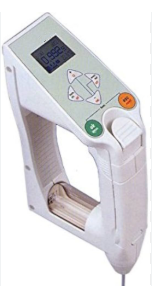
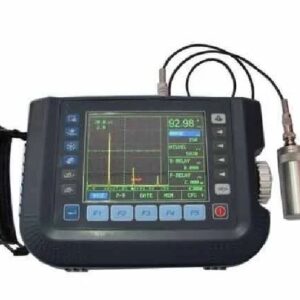



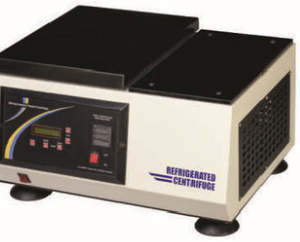

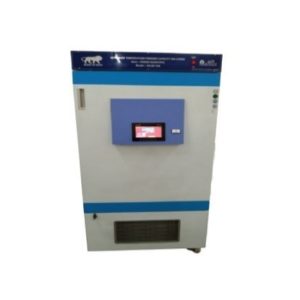
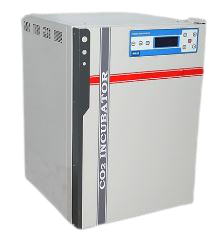


Reviews
There are no reviews yet.